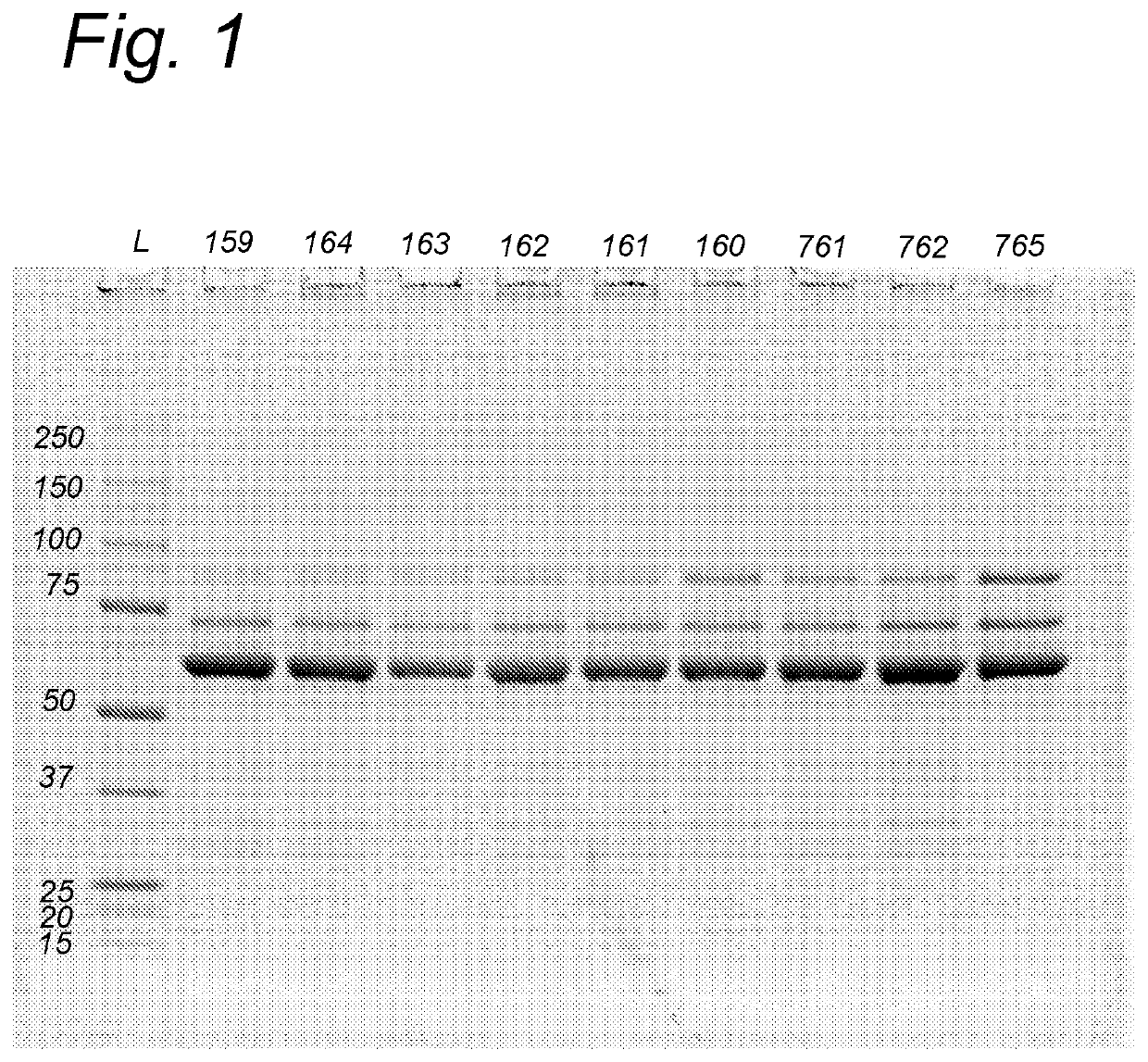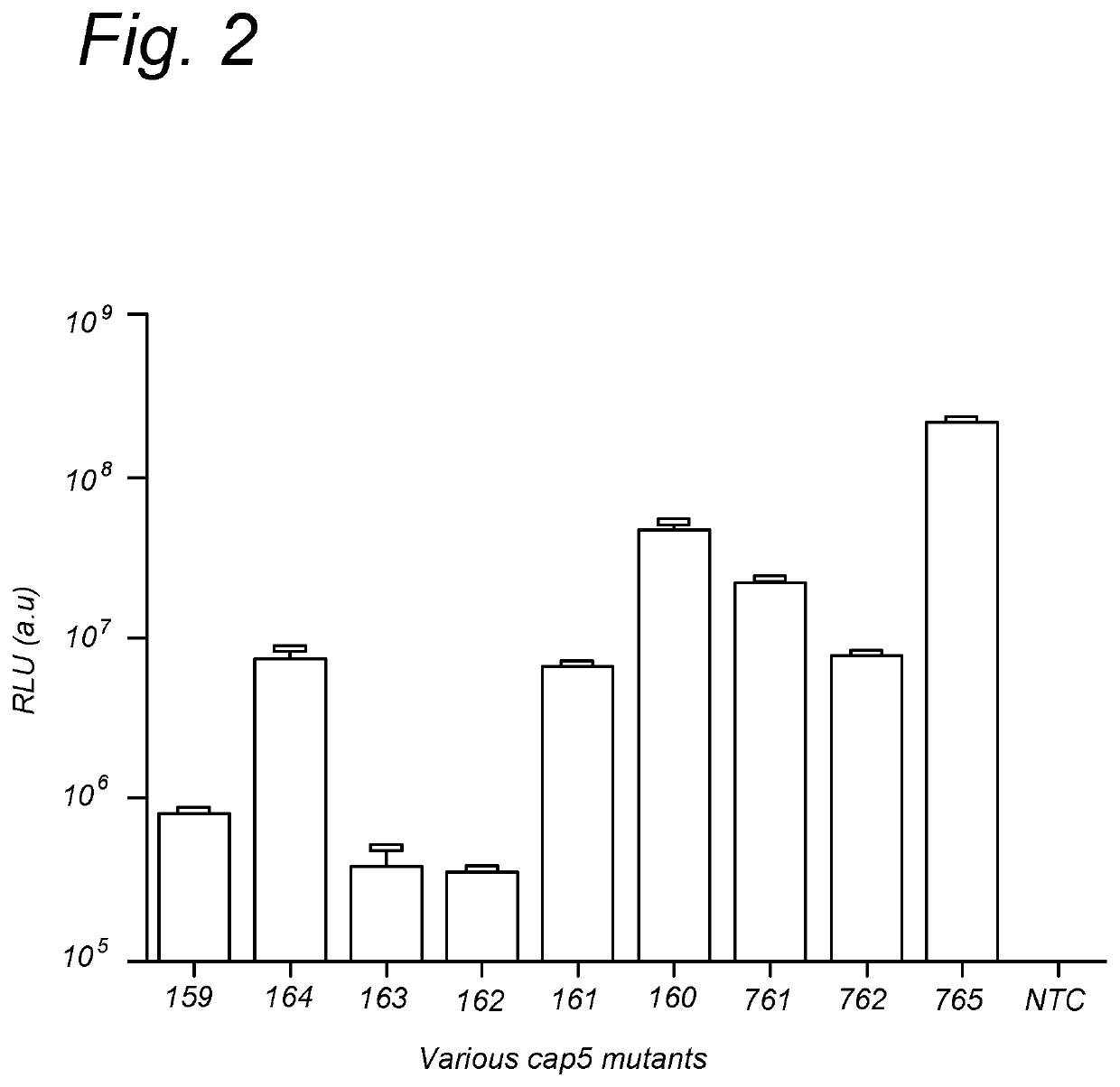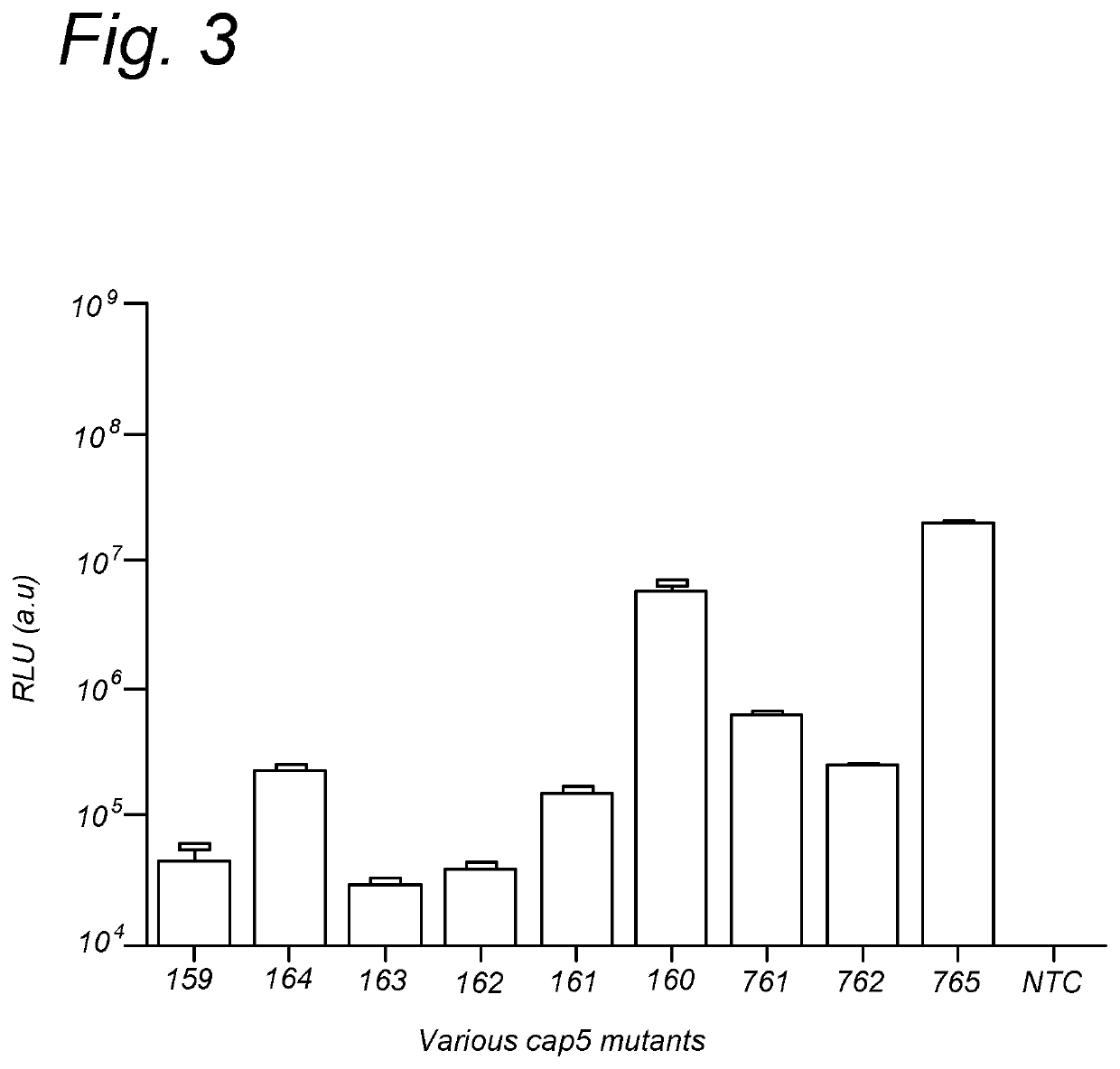Further improved AAV vectors produced in insect cells
a technology of adenovirus and insect cells, which is applied in the direction of viruses/bacteriophages, dsdna viruses, peptide sources, etc., can solve the problems of baculovirus constructs for expression of two rep proteins, contaminated vectors produced in mammalian cell culture, and inability to produce commercially, etc., to achieve the effect of improving mrna stability, reducing expression levels, and increasing expression levels
- Summary
- Abstract
- Description
- Claims
- Application Information
AI Technical Summary
Benefits of technology
Problems solved by technology
Method used
Image
Examples
examples
1. Introduction
[0109]The initial baculovirus system for production of rAAV was described by Urabe et al (Urabe et al. [2002] Human Gene Therapy 13(16):1935-1943) and consists of three baculoviruses, namely Bac-Rep, Bac-cap and Bac-vec, co-infection of which into insect cells e.g. SF9 resulted in generation of rAAV. The properties of such produced rAAV, i.e. physical and molecular characteristic including potency, did not differ significantly from the rAAV generated in mammalian cells (Urabe [2002] supra). In order to accomplish efficient generation of rAAV vectors in insect cells the AAV proteins needed for the process had to be expressed at appropriate levels. This required a number of adaptations of operons encoding for Rep and Cap proteins. Wild type AAV expresses large Rep78 to small Rep52 from two distinct promoters p5 and p19 respectively and splicing of the two messengers results in generation of Rep68 and Rep52 variants. This operon organization results in limited expression...
PUM
| Property | Measurement | Unit |
|---|---|---|
| ionic strength | aaaaa | aaaaa |
| temperature | aaaaa | aaaaa |
| ionic strength | aaaaa | aaaaa |
Abstract
Description
Claims
Application Information
 Login to View More
Login to View More - R&D
- Intellectual Property
- Life Sciences
- Materials
- Tech Scout
- Unparalleled Data Quality
- Higher Quality Content
- 60% Fewer Hallucinations
Browse by: Latest US Patents, China's latest patents, Technical Efficacy Thesaurus, Application Domain, Technology Topic, Popular Technical Reports.
© 2025 PatSnap. All rights reserved.Legal|Privacy policy|Modern Slavery Act Transparency Statement|Sitemap|About US| Contact US: help@patsnap.com



